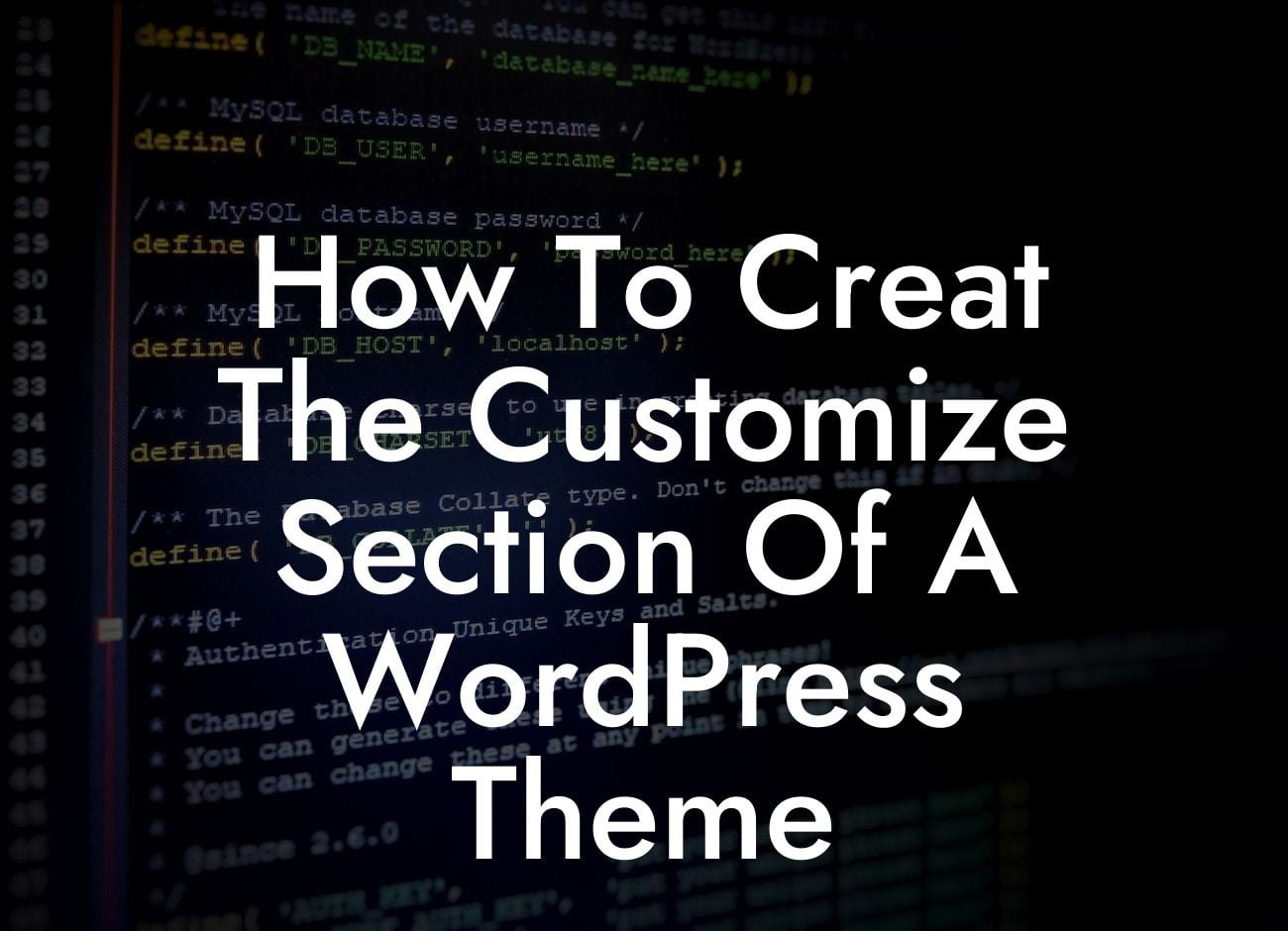Creating a captivating and unique website is essential for small businesses and entrepreneurs to stand out from the competition in today's digital world. WordPress is a popular platform that allows you to customize your website to suit your brand and cater to your specific needs. In this guide, we will walk you through the process of creating a customized section for your WordPress theme. By the end, you'll have the know-how to take your online presence to the next level and attract more customers than ever before.
Creating a customized section in a WordPress theme involves a few key steps. We'll break them down for you in a clear and concise manner, ensuring that you can follow along without any technical difficulties.
Header tags (H2, H3) are essential in organizing your content and improving its search engine optimization (SEO). By utilizing header tags effectively, you can create a structure that is easy to read and helps search engines understand your content better. Additionally, bullet point and ordered lists can make your information easily scannable, increasing user engagement.
First, you need to identify the purpose and functionality of the customized section. Whether it's a call-to-action banner, an image gallery, or a testimonials section, understanding the goal of the section will help you design it in a way that aligns with your website's overall aesthetic and objectives.
Next, you'll need to access your WordPress theme files. This requires basic knowledge of FTP (File Transfer Protocol) or using a file manager provided by your hosting provider. Once you're in, locate the theme folder and open the file that corresponds to the section you want to customize.
Looking For a Custom QuickBook Integration?
Now comes the exciting part - coding your customized section. WordPress provides a robust and flexible structure using PHP, HTML, and CSS. This allows you to modify various elements such as text, images, colors, and layouts to create a truly unique and captivating section. Be sure to follow best practices and use proper coding techniques to maintain the integrity of your theme.
Once you're satisfied with your modifications, save the file and upload it back to your server. Refresh your website, and voila! You should now see your customized section live on your WordPress site.
How To Creat The Customize Section Of A Wordpress Theme Example:
Let's say you own a small bakery and want to add an enticing image gallery section to showcase your delicious treats. You can customize the section to include mouthwatering images, captions, and even a link to order online. This visually appealing and user-friendly section will captivate your visitors and entice them to explore your bakery further.
Congratulations on creating a customized section for your WordPress theme! With DamnWoo's easy-to-follow guide, you've learned how to elevate your online presence and make your website stand out from the crowd. Don't forget to share this article with others who may benefit from it and consider exploring our other guides on DamnWoo for more expert tips and tricks. And if you're looking to supercharge your website's success, be sure to try our awesome WordPress plugins, designed exclusively for small businesses and entrepreneurs like you.













